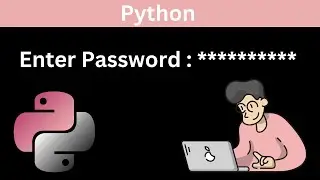Unclickable button in python GUI Tkinter
In this tutorial, we'll explore how to implement an unclickable button in a Python GUI application using Tkinter. While Tkinter offers standard button widgets that respond to user clicks, sometimes you may need a button that remains inactive or unclickable under certain conditions. Whether it's to prevent accidental clicks or to signify a disabled feature, understanding how to create such a button can be valuable in GUI design.
Throughout the video, we'll cover the following key points:
Introduction to Tkinter: A brief overview of Tkinter, the standard GUI toolkit for Python.
Creating a Basic Button: Demonstrating how to create a standard clickable button using Tkinter.
Designing an Unclickable Button: Discussing the concept and need for an unclickable button in GUI design.
Implementing State Management: Explaining how to manage the state of the button to make it unclickable.
Customizing Appearance: Styling the button to visually indicate its inactive state.
Testing the Unclickable Button: Verifying the functionality by running the GUI application and interacting with the button.
By the end of this tutorial, you'll have a clear understanding of how to create an unclickable button in Python GUI applications using Tkinter, allowing you to enhance user experience and add more control to your graphical interfaces. Whether you're a beginner or an experienced Python developer, this video will provide valuable insights into GUI design with Tkinter.



















